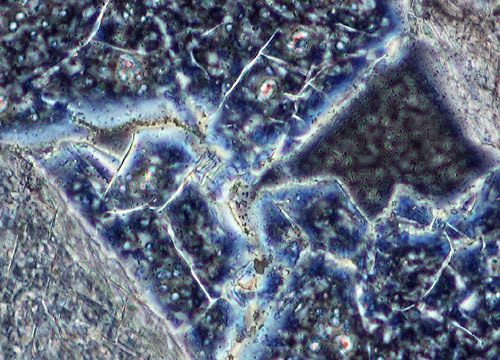Goniatitic Cephalopod Fossil
Goniatites are an extinct species of ancient marine animal that evolved approximately 400 million years ago. Flourishing in the Devonian period, goniatites now act as important zone, or index, fossils to geologists who use them to identify rocks of that period. All knowledge concerning goniatites derives from fossil records and familiarity with their modern-day relatives.
 Negative
Negative
 Positive
Positive
Positive
Despite appearances, goniatites are believed to have been surprisingly mobile. They werecephalopods, similar in body structure to squids and octopuses, which lived in a multi-compartmental shell. The animal only occupied the last chamber and propelled itself by using its tentacles or by squirting water out of its body cavity. The internal chambers of the shell were probably filled with gas, making the animal float and drift in water. Goniatites were especially widespread in the shallow seas that surrounded, and occasionally flooded, deltas in North America, Europe, North Africa and Australia.
Negative
The coiled shells of goniatites, though hard, were not unchanging. They sporadically grew to accommodate the soft body of the animal. The thin walls between the internal chambers of the shell are known as septa. As goniatites increased in size, they would move their bodies forward in the shell. At the same time, they secreted new septa behind them, thereby adding another chamber to their shells. Where each septum contacted the wall of the outer shell, sutures are visible as a series of narrow lines on the surface of the shell fossils. The sutures of goniatites have a characteristically zigzag shape.













